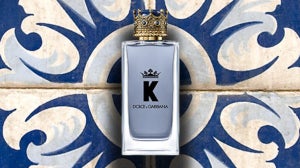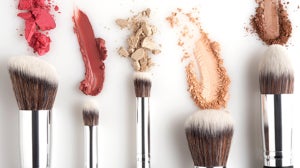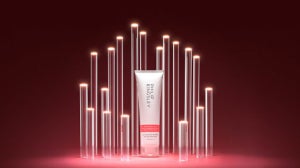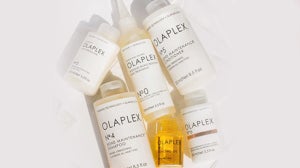
Spots and breakouts. You may have thought that you'd left those pesky pimples behind in your teenage years... but here you are staring at a weird blemish in the mirror - when you least expected it.
Alas, hormonal acne can hit at any age range. Here's the lowdown on what it is and how you can ameliorate your skincare routine to cope with the unexpected.
Hormonal acne is exactly what it sounds like – it’s acne that occurs due to fluctuations in your hormones. Although men and women can both be affected by acne, hormonal acne is more common in women, because of factors such as menstruation, pregnancy, and menopause, which bring surges in hormone levels. While hormonal acne is often associated with fluctuating hormones during teenage years, it’s actually most like to strike in your 20s, when women are most hormonally active. You might be surprised to know that over 90% of the world’s population will suffer from acne at some point in their life, making it one of the most common disorders treated by healthcare providers. It's also a topic which generates a surprising amount of social media interest - you only have to look at the success of Dr. Sandra Lee (aka Dr. Pimple Popper) to realise that the world of breakouts can affect anyone at any walk of life.
Aside from the physical symptoms of acne, this skin disorder can also have an emotional and psychological impact too.
Studies have shown
that acne can affect a person’s mood, self-esteem, and quality of life. In fact,
95% percent of individuals
with acne in the UK say that it affects their daily lives.
What Causes Hormonal Acne?
Acne is a skin condition that happens when your sebaceous glands (tiny glands near the surface of your skin) make too much sebum (an oily secretion of the sebaceous glands). The excess sebum bands together with dead skin cells clog your pores and form acne lesions, which include blackheads and whiteheads.
Fluctuations in your oestrogen and progesterone levels are the main causes of hormonal acne. These fluctuations can vary greatly during your menstrual cycle. Changes in the ratio, or balance of these hormones can affect your testosterone levels, which in turn can also contribute to the appearance of acne. Stress plays an important part in hormonal acne too – when cortisol levels go up as part of your body’s stress response, your skin produces more sebum, which can lead to breakouts.
Acne can also be caused or made worse by Polycystic Ovarian Syndrome, Menopause and increased androgen levels, the latter being hormones that play a role in the development of male traits. These hormones are present in both men and women.
Recognising Hormonal Acne
If the below apply, there’s a good chance you’re suffering from hormonal acne.
You have pimples that appear on your chin and jawline. Increased hormone levels in your body can stimulate your oil glands—and most of them can be found around your chin area. Although the chin and jawline are really common places for hormonal acne, it can also flare-up on the side of your face or down your neck.
You have monthly breakouts. Hormonal acne follows a cycle – a lot like women’s menstrual cycles. Postmenopausal women can experience hormonal acne too, as they are still susceptible to monthly fluctuations in their oestrogen and progesterone levels.
You’re under a lot of stress. A build-up of too much stress can lead to flare-ups, as cortisol (the stress hormone) can put your other hormones out of whack – another reason you should try to relax and de-stress on a regular basis. What’s more, if you’re stressed, you might not be looking after yourself quite as much as you should, and your skincare routine and diet can suffer, making breakouts more likely.
Hormonal Acne Treatment
Although hormonal acne can leave you feeling like your skin has a mind of its own, there are several options to help treat it.
Contraception
Oral contraceptives have compounds that target the hormones which cause acne. So if you aren’t already on the Pill, consider asking your doctor whether they’d recommend it to help treat your acne. Make sure to always check with a Medical Professional before taking any medication or adapting your skincare routine.
Topical retinoids
If you have mild to moderate acne, you can use topical retinoids, which work by removing dead skin cells to prevent them building up inside hair follicles. They usually come in a gel or cream and should be applied once a day before bed. You can get retinol containing products over the counter, but for stronger concentrations you’ll need to get them prescribed by a dermatologist or doctor.
Diet
What goes into your body can also affect you and your skin. Although the relationship between diet and acne hasn’t yet been firmly established, what we do know is that some foods can help alleviate skin inflammation, which can cause acne. Foods high in
antioxidants
, such as lentils and green leafy vegetables, andOmega-3 fatty acids
, found in fatty fish (salmon, herring, and mackerel) can help reduce skin inflammation. You could also opt for an Omega-3 supplement if you don’t eat a lot of fatty fish.
Non-comedogenic makeup
Be extra kind to your skin and take care when choosing makeup. Go for non-comedogenic types - makeup that won’t clog your pores - which in turn should minimise the chance of flare-ups.
5-step skincare routine
Committing to a good skincare routine can help treat or alleviate hormonal acne. Try this 5-step routine to take care of your skin and minimise the chance of acne flare-ups.
1. Double cleanse
Cleansing your skin helps to keep sebum from building up. Double cleansing is
when you first cleanse the skin with an oil cleanser, followed by a second cleanser which is either foam or cream-based. Why double cleanse? Using an oil cleanser first helps to break down the makeup, dirt, and oil on your skin which builds up during the day. Cleansing your skin properly will make sure you get the benefits of the other products which follow.
2. Exfoliate/Steam
Exfoliation is key to any skincare routine. Unfortunately, dead skin cells re-accumulate every day, so this isn't a one-time thing. If you have super-sensitive skin, start off with a mild exfoliant (lactic acid), and use it just once a week for a few weeks, slowly working your way up to 3 to 4 times per week. Steaming can also help open and unclog your pores. Simply boil some water, pour it into a
bowl and add essential oils or herbs like chamomile or lavender. Steam your face with a towel over your head for up to 10 minutes. Don’t steam your skin more than once a week.
3. Mask
Face masks help to remove dead skin cells and other debris that can accumulate in pores
and contribute to breakouts. Using a clay mask after steaming can work wonders - your pores will be open, so the mask can get in and do its work more easily, drawing out dirt and impurities.
4. Tone
This is an important step after cleansing your skin because toner helps to close your open pores and remove any final traces of dirt or makeup
. Follow the instructions on your acne-fighting skin care products carefully and don’t be
tempted to apply too much at once, this can lead to further irritation. Remember to check with your GP or dermatologist to make sure you’re using the most effective products for your skin type.5. Moisturise
Whether you’re prone to dry or oily skin, either can aggravate your acne, making
moisturising an important step in your skincare routine. Using a moisturiser every day is a great way to seal the moisture in your skin. If you have oily skin, look for oil-free moisturisers, and opt for lotions and serums rather than thick creams. If your skin is prone to dryness, go for a more hydrating cream. Keep in mind that your skin might be dehydrated rather than dry – your skin can be oily and dehydrated at the same time, as dehydration is a lack of water, not oil. Dehydration can be caused by factors such as weather, pollution, and diet, as well as the overuse of harsh skin care products. Dehydrated skin looks dull, feels tight or rough, may be sensitive, and can show fine lines. If you have dehydrated skin, switch to more gentle skincare products, don’t over-wash your face (no more than twice a day), and avoid irritating ingredients like essential oils or alcohol.
Seeking professional help
Talk to your GP or dermatologist if you’re having trouble controlling or treating your acne, or if your acne is moderate to severe. If your skin has developed nodules or cysts, see your GP as soon as possible and have these treated to prevent scarring.
Try not to let acne get you down – there are lots of options and treatments out there, and you shouldn’t let acne stop you from living your best life. Start taking control of your skin today! To learn more about how to start living your best life, read our blog on 'Time for You' and join the Me Time Movement!

Related Articles








